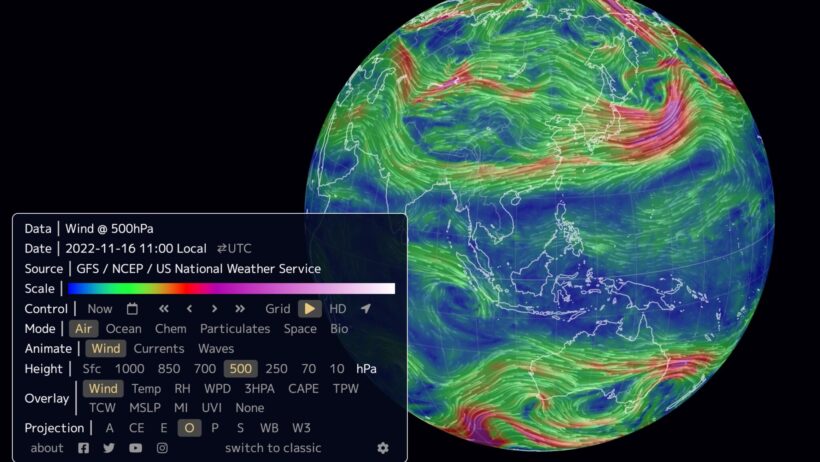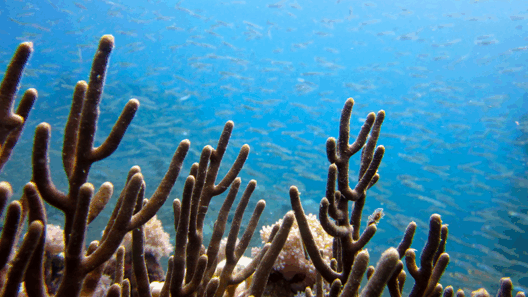Global warming represents an existential threat that transcends borders and affects every facet of our lives. Among the myriad consequences of this phenomenon, alterations in ocean currents and their subsequent impact on global weather patterns are particularly alarming. To comprehend this complex narrative, one must first understand the mechanics of ocean currents and their pivotal role in regulating climate.
Ocean currents can be likened to a vast system of rivers flowing through the sea. These currents are driven by a combination of factors, including wind, the Earth’s rotation, salinity, and temperature differences between regions. The major currents, such as the Gulf Stream, play a critical role in transporting warm water from the equator towards the poles, while cold currents carry cooler water back southward. This circulation system, known as thermohaline circulation, not only influences regional climates but also contributes to the distribution of nutrients and marine life.
As global temperatures rise due to the accumulation of greenhouse gases in the atmosphere, the delicate balance that governs ocean currents is being disrupted. Higher sea surface temperatures can lead to alterations in the density of seawater, which directly affects how currents flow. When the polar ice caps melt, this influx of freshwater dilutes saltwater, disrupting the salinity levels essential for maintaining the normal thermohaline circulation. The ramifications of such disruptions extend far beyond the oceans and influence weather patterns globally.
One of the most immediate consequences of changing ocean currents is the intensification of extreme weather events. For instance, the Gulf Stream plays a vital role in regulating the climate of North America and Western Europe. If alterations to its flow occur, it could lead to more severe winters in Europe while simultaneously exposing the eastern coast of the United States to increased hurricane activity. Studies have shown that anomalies in ocean currents are correlated with the frequency and intensity of storms, droughts, and flooding, leading to catastrophic outcomes in susceptible regions.
Additionally, the altered distribution of heat across the ocean’s surface impacts atmospheric circulation patterns. The jet stream—an important driver of weather—influences precipitation, storm tracks, and temperature distribution. If ocean currents change, the jet stream may become more erratic. This can lead to prolonged droughts in some areas while simultaneously causing excessive rainfall and flooding in others. The variability introduced by these alterations can result in significant agricultural impacts, threatening food security in regions that depend heavily on stable weather patterns for crop production.
Furthermore, shifting ocean currents have profound implications for marine ecosystems. Species that rely on specific temperature ranges for breeding, feeding, and migration may find themselves displaced as their habitats alter. This displacement can lead to a reduction in biodiversity and affect fisheries, which are crucial for global food supply and economic stability. As fish populations migrate to cooler waters, fishing communities may face declining stocks and increased competition for resources, further exacerbating socioeconomic disparities in coastal regions.
Climate change is not a distant challenge to be addressed tomorrow; it is an ongoing crisis that demands immediate attention. The implications of shifting ocean currents reach every corner of the globe, from local ecosystems to global weather patterns. Coastal cities are particularly vulnerable due to rising sea levels and greater flood risks, necessitating urgent investment in resilient infrastructure and emergency response systems.
Adaptation strategies must also be employed to mitigate adverse impacts. This includes not only enhancing our early warning systems for extreme weather but also embracing sustainable practices in agriculture and fisheries management. Transitioning towards renewable energy sources is essential to halt the progression of climate change, which feeds back into the system causing these disruptions. By fostering a collective effort to reduce carbon emissions, communities can work towards a more stable and predictable environment.
Education and advocacy play pivotal roles in raising awareness about the interconnectedness of ocean currents and weather phenomena. It is important for individuals and policymakers alike to understand that the health of our oceans is intrinsically linked to our climate stability. Youth education programs, community workshops, and public outreach initiatives can empower communities to take action, fostering a more informed citizenry dedicated to environmental stewardship.
In conclusion, the shifting tides of our oceans due to global warming are a clarion call for humanity. The potential changes in ocean currents could usher in an era characterized by extreme weather, displaced marine life, and uncertain futures for vulnerable populations. Embracing sustainable practices, investing in infrastructure, and advocating for robust climate policies can help mitigate these deleterious effects. It is not merely an issue of environmental concern; it is a profound ethical challenge that demands immediate and collective action to preserve the intricate balance of life on Earth.







